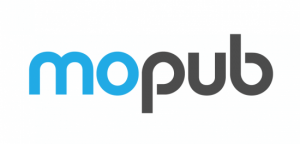Operationalizing AI doesn’t require an entirely new tech stack. Learn how to leverage your MOps foundations and simply expand them to enable AI productivity.
The secret to launching an operations framework to drive AI-enablement within your organization is not so secret. So much of what enables effective AI operations lies in reframing existing core operational tools and workflows rather than introducing entirely new systems.
The introduction and safe use of AI is the ultimate goal. And to operationalize it, you can leverage current tools and systems and expand them to capture AI-specific strategies.
Below is an actionable blueprint to lay the foundation for using AI within your organization so that you can start benefiting from its value appropriately and scalably.
First, what is AIOps?
AI operations (AIOps) refers to the application of artificial intelligence technologies to enhance and optimize business operations and workflows. It focuses on using AI to assist humans and augment human capabilities rather than replace them.
For creative and marketing teams, this means leveraging AI tools to help with:
- Automating repetitive administrative tasks.
- Producing content variations like text, images and video.
- Optimizing assets for different platforms.
- Analyzing campaign performance data.
- Providing insights to inform strategy.
The goal is to use AI to empower human marketers and creatives, not replace them. AI handles executional work while people provide oversight and judgment.
The foundational pillars of AIOps
The fundamental principles of AI operations are closely aligned with the foundational pillars of marketing operations:
- Project management.
- Digital asset management.
- Metrics.
- Governance.
By expanding your use of these operational areas of focus, you can enable a foundation for AI operations. In addition to the AI tech itself, the only new component to the operational framework beyond these four foundational pillars is a shared data set — a collaborative prompt library.
1. Project management
AI-enabled work requires the same amount of attention as any other business activity. And to maximize productivity, whether on AI-related initiatives or through manual labor, it’s a best practice to leverage a centralized project management platform. However, it’s important to quantify and report on AI-enabled work so that it can be isolated and then compared for efficiency gains against manual projects.
To accomplish this, I recommend creating separate portfolios to house all AI-related initiatives and pilots so that these activities can be segmented but reported globally against other business-as-usual (BAU) initiatives. Tracking AI projects distinctly allows you to isolate progress and performance for clear reporting and insights.
Managing AI work just like traditional marketing efforts in a centralized system of record allows you to:
- Quantify productivity gains.
- Spotlight incremental time/cost savings.
- Optimize budget and resource allocation.
- Build executive alignment.
- Track risks and dependencies.
It’s important to document key details on each project, such as goals and objectives, the source of data input, AI tools used, target metrics, risks and results, so that AI efforts can be quantified and reported on to provide an understanding of the efficiency they may result in.
2. Digital asset management
As with traditional marketing campaigns, generative AI results in new digital assets that must be organized in a structured model for searchability, distribution and overall productivity. One could argue that more organization may be required based on the increased volume of assets that AI content creation enables. In this way, your DAM platform should remain a central pillar in your overall AI operations strategy for the content hosting environment it delivers.
But similar to project management, it’s important to expand the use of the platform to specifically track the content generated from AI initiatives (or with the use of AI) so that the organization can isolate these efforts for comparison and evaluation. Expanding a metadata schema is the quickest way to do this so that you can tag assets to reflect the source of their creation.
For example, you may want to:
- Update metadata fields to capture key data on AI usage, including prompt ID, AI model used, and percentage generated by AI vs. humans.
- Build collections, tags, and taxonomies to identify and isolate AI-influenced assets.
- Integrate your prompt library metadata with your DAM to link prompts to resulting assets.
With the right metadata foundation, your DAM can become the command center, providing visibility into AI’s impact on content production across campaigns and teams.
3. Metrics
Mature operations teams understand the importance of establishing clearly defined key metrics aligned to goals like time savings, output volume increases and asset creation time per campaign. AI efforts are no different. Tracking operational performance data quantifies the impact of AI, informs strategic decisions and helps make the case for future AI investments.
Consider the following categories of metrics:
- Prompt-level metrics to inform the efficacy of the prompt engineering strategy.
- Operational metrics to inform efficiency gains and productivity.
- Content-level metrics to inform the performance of actual creative assets.
- Pilot metrics to inform the success of AI implementation.
4. Governance
Without oversight, well-intentioned AI experiments risk compounding shadow IT and policy issues. Shadow IT refers to situations where business units implement software outside of centralized IT governance.
To mitigate this, you need governance and the most critical body for implementing unified AI operations is assembling an AI council — a diverse team that steers all AI initiatives. This council should be responsible for implementing the full AI framework:
- Managing the implementation of prompt libraries and metadata models.
- Defining project prioritization frameworks.
- Establishing metrics and benchmarks.
- Steering use cases and tools.
- Developing policies and guardrails.
- Monitoring performance and risks.
To be most effective, the council should include a blend of operations, legal, IT, analytics, and business strategy expertise — and don’t lose the opportunity to include fresh perspectives through junior stakeholders as they may be most familiar with trends within the space.
This governance structure can guide direction while accelerating momentum through diverse collaboration, unlocking transformation by encouraging experimentation with oversight.
5. Prompt library: The new operations foundational pillar
The new kid on the Ops block is a collaborative prompt library, a database cataloging processed prompts with version histories and measured impact analytics. This can be as simple as a shared spreadsheet but can grow into a fully integrated solution connecting project management through DAM.
Whenever you use generative AI, you’re effectively rolling the dice on the output. A shared prompt library lets teams capture proven prompts that reliably produce on-brand content, saving others from reinventing the wheel or starting from scratch. Continually optimizing prompts through new examples and performance data maximizes consistency over time. Start by:
- Developing a taxonomy to categorize prompts by use case, content type or other attributes.
- Documenting prompts using a standard template that includes fields for prompt text, parameters, AI tool used and measured performance metrics.
- Tagging prompts based on factors like tone of voice or goal outcome for easy filtering and reuse.
Think of your prompt library as a living asset that grows in value through iteration and collaboration.
Launching a cutting-edge AI strategy within your marketing department
AI represents a new era of marketing productivity, and knowing where to start can be intimidating. Recognize that much of what enables enterprise AI adoption builds upon the operational foundations in place today, which your team likely already possesses.
- Bolster project tracking to quantify AI augmentation gains.
- Expand metadata capture in creative platforms.
- Benchmark metrics to spotlight impact.
- Formalize oversight through a council charter.
Combine existing strengths with a prompt library, and your marketing function will be well on its way to rapidly activating AI operations.
The post The 5 key pillars of AIOps in marketing appeared first on MarTech.
MarTech(2)





